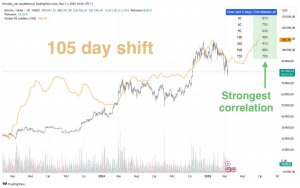3 Motivation Theories You Need to Know to Better Influence Your Colleagues

To be a leader these days requires a firm understanding of personal psychology. Leadership is a matter of influencing people, and, to best influence, one needs to have a firm grasp on what motivates people to action in the first place.
Of the several theories of motivation that can be used in the business context, three stand out as most interesting: Maslow’s Hierarchy of Needs, Herzberg’s Two-Factor Theory, and Expectancy Theory.
Maslow’s Hierarchy of Needs was one of the first attempts to systematically examine an individual’s needs as a way to identify sources of motivation. Maslow grouped human needs into five categories and demonstrated how humans tend to address each set of needs in order, from most basic to most complex (Daft, 2008).
They are: 1. Physiological Needs such as food, air, and shelter; 2. Safety Needs such as protection from danger or harm; 3. Social Needs such as acceptance and care from friends and family; 4. Esteem Needs such as recognition and accomplishment on a grand scale of life; and finally, 5. Self Actualization Needs such as the development of one’s full potential as a human being and achieving justice.
Most practically, Maslow’s Hierarchy indicates what a person will be interested in granted the station that they are currently in. Since it is assumed that a person moves through the hierarchy in order, if a person has his physiological, safety, and social needs fulfilled, for example, we can conclude that he will be focused on satisfying his esteem needs.
Frederick Herzberg’s Two-Factor Theory takes a similar needs-based approach, but with two major changes, the first being there are only two categories of needs rather than five, and the implications are directly related to the business world so they are more readily applicable (Daft, 2008).
The premise of the Two-Factor Theory is that there are two areas in which job conditions affect satisfaction, called Hygiene Factors (such as pay and security, company policies, and interpersonal relationships) and Motivators (such as recognition, responsibility, and company mission). Similar to Maslow’s Hierarchy, the two factors are layered with Hygiene on the bottom and Motivators on top, but, in this model, the satisfaction of needs operate somewhat independently.
Herzberg shows that meeting hygiene needs can lower dissatisfaction though it cannot increase satisfaction. By the same token, providing motivators can increase satisfaction, but it cannot lower dissatisfaction. In this way, a leader will want to address both issues to provide the best work experience.
Instead of viewing intrinsic needs as Maslow’s Hierarchy and the Two-Factor Theory do, Expectancy Theory incorporates an individual’s thought process into the equation. Though it is more complex, the model provides flexibility where the other two were rigid, and provides the essential piece that was missing in the other two.
Expectancy Theory starts with the sensible observation that human beings are judging beings and thus can adjust their expectations based on the situation (Daft, 2008).
The theory is founded upon a simple decision tree that takes an individual through three steps in the thought process: 1. Effort → Performance Expectancy (“Will the effort lead to performance?”), 2. Performance → Outcome Expectancy (“Will performance lead to outcome?”), 3. Valence (“Are the outcomes highly valued?”). If all three steps are answered in the affirmative, then the individual is motivated to act, first to put forth effort, then to perform, then to achieve the outcome.
While the Expectancy Theory is extraordinarily flexible and can be applied in practically any business situation, it is not as clear as it is with Maslow’s Hierarchy and the Two-Factor Theory exactly how to use the data gathered using this decision tree, and, specifically, how to turn a low-motivation aspect of the job into a high one. For that, a supplement of the other two theories might be in order.
References
Daft, R. L. (2008). The leadership experience. (4th Ed.). Mason, OH: Thomson South-Western. ISBN13: 9780324539684







